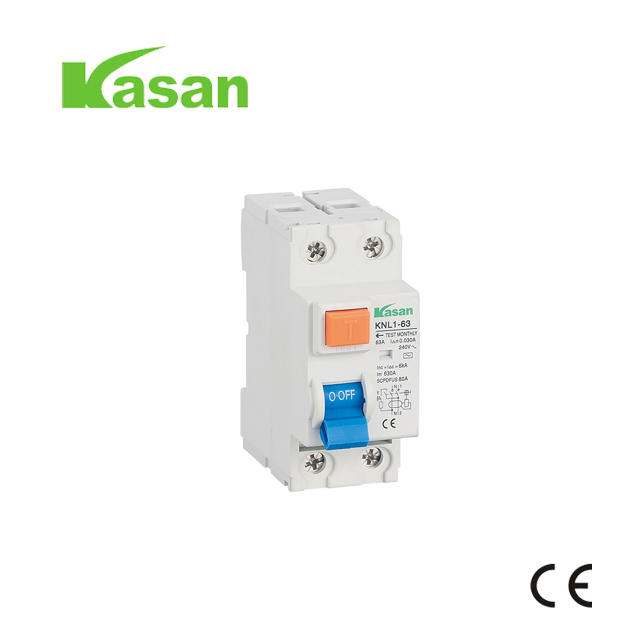Key Points about Residual Current Circuit Breaker
2024-07-11
A Residual Current Circuit Breaker (RCCB), also known as a Residual Current Device (RCD), is a safety device used to protect against electric shock and electrical fires by detecting and disconnecting the circuit when there is a discrepancy between the live and neutral currents. Here are the key points about RCCBs:
Key Features
1. Leakage Detection
- Detects imbalance between the live (hot) and neutral currents.
- If the difference exceeds a predetermined threshold, the RCCB trips and disconnects the circuit.
2. Sensitivity Ratings
- Typically rated for different sensitivity levels, such as 10 mA, 30 mA, 100 mA, and 300 mA.
- 30 mA is common for personal protection, while higher ratings are used for equipment protection.
3. Operating Mechanism
- Uses a core-balance transformer to detect the residual current.
- When an imbalance is detected, an electromagnet or solenoid trips the circuit breaker.
4. Test Button
- Includes a test button that simulates a fault condition to ensure the device is functioning correctly.
- Regular testing is recommended to maintain safety.
Applications
1. Residential
- Installed in homes to protect against electrical shock and fire hazards.
- Commonly used in wet areas such as bathrooms, kitchens, and outdoor circuits.
2. Commercial and Industrial
- Used in offices, factories, and commercial buildings to enhance safety.
- Protects personnel and equipment from electrical faults.
3. Construction Sites
- Temporary installations to protect workers and equipment.
- Ensures compliance with safety regulations.
4. Medical Facilities
- Essential in hospitals and clinics to protect sensitive medical equipment and patients.
Benefits
1. Protection Against Electric Shock
- Quickly disconnects power to prevent injury or fatality due to electric shock.
2. Fire Prevention
- Reduces the risk of electrical fires caused by faulty wiring or insulation failures.
3. Enhanced Safety
- Provides additional protection beyond standard circuit breakers and fuses.
- Essential for compliance with modern electrical safety standards.
4. User-Friendly
- Easy to install and test, providing peace of mind for users.
Types of RCCBs
1. 2-Pole RCCBs
- Designed for single-phase systems.
- Monitors live and neutral wires.
2. 4-Pole RCCBs
- Designed for three-phase systems.
- Monitors three live wires and a neutral wire.
3. Type AC RCCBs
- Detects only AC residual currents.
- Suitable for general-purpose use in residential and commercial applications.
4. Type A RCCBs
- Detects both AC and pulsating DC residual currents.
- Ideal for modern electronic devices that can generate DC fault currents.
5. Type B RCCBs
- Detects AC, pulsating DC, and pure DC residual currents.
- Used in specific industrial applications with variable frequency drives and photovoltaic systems.
Installation and Maintenance
1. Installation
- Should be installed by a qualified electrician.
- Must be connected correctly to ensure proper operation.
- Installed in the main distribution board or consumer unit.
2. Testing
- Regularly test using the built-in test button to ensure functionality.
- Recommended to test at least once a month.
3. Maintenance
- Inspect for signs of wear or damage.
- Ensure connections are secure and free from corrosion.
- Replace immediately if the RCCB fails a test or shows signs of malfunction.
Limitations
1. No Protection Against Overload
- RCCBs do not protect against overload or short circuits.
- Must be used in conjunction with other protective devices like MCBs (Miniature Circuit Breakers).
2. Nuisance Tripping
- Sensitive RCCBs may trip due to harmless transient currents or minor leakage currents.
- Proper selection and installation can minimize nuisance tripping.
3. Not a Substitute for Earthing
- RCCBs provide additional protection but do not replace the need for proper earthing and grounding.
Leading Manufacturers
1. Schneider Electric
- Offers a wide range of RCCBs with various sensitivity ratings and configurations.
2. Siemens
- Known for high-quality and reliable RCCBs suitable for residential, commercial, and industrial applications.
3. ABB
- Provides advanced RCCBs with features like self-testing and remote monitoring.
4. Legrand
- Offers user-friendly and efficient RCCBs for various electrical systems.
5. Eaton
- Known for durable and versatile RCCBs that meet rigorous safety standards.
Summary
RCCBs are crucial safety devices designed to protect people and property from electrical hazards by detecting and interrupting residual currents. Their ability to provide additional protection beyond conventional circuit breakers makes them an essential component in modern electrical installations. Proper selection, installation, and regular testing are key to ensuring their effectiveness and reliability.



